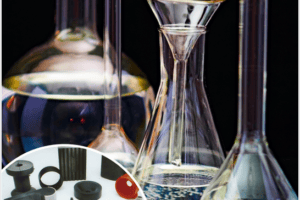CGR Products stocks a large variety of materials for a wide range of applications. Flexible rubber sheeting, adhesive solutions, and fiber materials are just a few of our specialty options. Our Material of the Month series spotlights some of our favorite materials and their unique applications. This month, we’re discussing Felt. What is Felt? Felt…

Protecting Adhesive Materials During Humid Summer Months
Summer’s heat and humidity can be especially damaging to adhesive materials. If not properly shielded , the siliconized release liner of your pressure-sensitive adhesives (PSA) will wrinkle and pucker in the heat — called cockling — resulting in overall production kinks and system failures. With the start of summer rapidly approaching, protection of your adhesive…
Material of the Month: Silicone Rubber
CGR Products stocks material choices of all kinds — flexible rubber sheeting, adhesive solutions, and fiber materials are just the beginning of our specialty options. Our Material of the Month series spotlights some of our favorite materials and their unique applications. This month, we’re discussing silicone rubber. What is Silicone Rubber? Silicone rubber is…

Material of the Month: EPDM Rubber
Highly Resistant and Versatile: A Solution for Everyday and Specialty Applications This blog post is the third installment of a new CGR Products content series called “Material of the Month.” The series spotlights some of the unique materials that CGR works with, as well as their common applications. Material selection can…

Material of the Month: Acrylic Foam Tapes
VHB Tapes can replace mechanical fasteners, liquid adhesives and more This blog is the first in a new CGR Products content series titled “Material of the Month.” The series will spotlight some of the unique materials and their applications that CGR works with. Our first material on the list is acrylic foam tape. What is…

Chemical Resistance 101: Ensure Your Component Can Resist the Chemicals It’s Exposed to
Prevent degradation to your application with a Chemical Compatibility Guide Each and every elastomer material — and family of materials — comes with specific capabilities. Elastomers demonstrate resistance to harmful chemicals and fluids, but they vary greatly in performance depending upon the material in question. It’s crucial to the success of a project to prevent…
